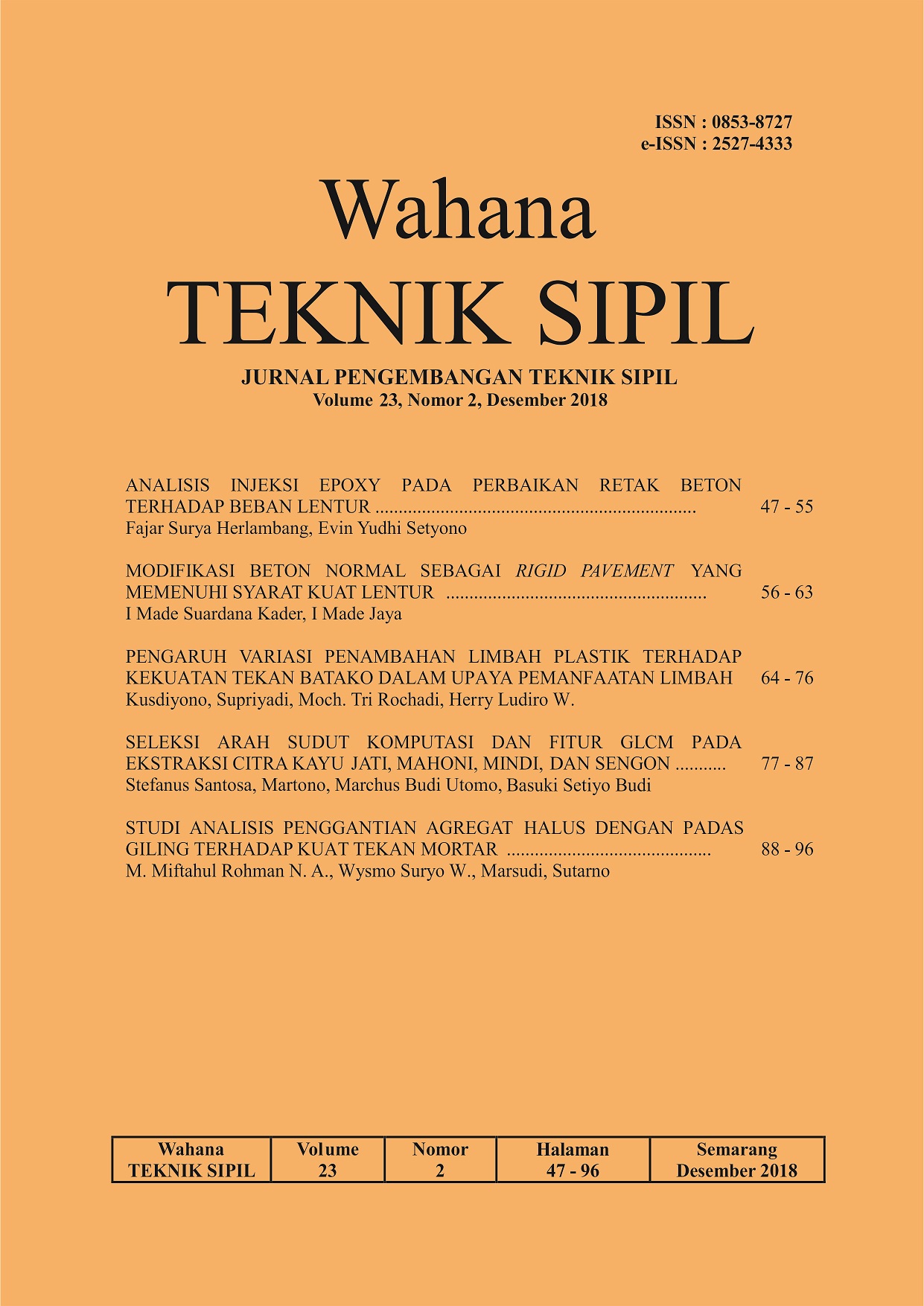Seleksi Arah Sudut Komputasi Dan Fitur Glcm Pada Kstraksi Citra Kayu Jati, Mahoni, Mindi, Dan Sengon
DOI:
https://doi.org/10.32497/wahanats.v23i2.1363Abstract
Research on feature extraction of wood texture with features and angle direction is
rarely done, especially in teak, mahogany, mindi, and albasia. This research is
needed to select more efficient and effective features and angle directions to identify wood species. The features tested were Angular Second Moment (ASM), Contrast, IDM / Homogenity, Entropy, Correlation and the direction of the computational 0, 45, 90, and 135 degrees of gray level co-occurrence matrix (GLCM). The experimental results show that the selected angles are 0, 45, and 90 degrees and features are IDM and Entropy.
Kata kunci : gray level co-occurrence matrix (GLCM), features extraction, wood
classification
References
Bremananth, R., Nithya B, and Saipriya R., 2009, Wood-Species- Recognition-System. World Academy of Science,
Engineering and Technology. International Journal of
Computer and Information Engineering, Vol:3, No:4, 2009.
Hu, S., Li, K., Bao, X., 2015, Wood species recognition based on SIFT keypoint histogram. 2015 8th International Congress on Image and Signal Processing (CISP), 2015, Pages: 702 ”“ 706.
Ibrahim, I., Khairuddin, A.S.M., Talip, M.S.A., Yusof, R., 2017, Tree species recognition system based on macroscopic image analysis. Wood Sci Technol, (2017) 51:431”“444, DOI 10.1007/ s00226-016-0859-4.
Downloads
Published
Issue
Section
License
Authors who publish with this journal agree to the following terms:Authors retain copyright and grant the journal right of first publication with the work simultaneously licensed under a Creative Commons Attribution License that allows others to share the work with an acknowledgement of the work's authorship and initial publication in this journal.
Authors are able to enter into separate, additional contractual arrangements for the non-exclusive distribution of the journal's published version of the work (e.g., post it to an institutional repository or publish it in a book), with an acknowledgement of its initial publication in this journal.
Authors are permitted and encouraged to post their work online (e.g., in institutional repositories or on their website) prior to and during the submission process, as it can lead to productive exchanges, as well as earlier and greater citation of published work (See The Effect of Open Access).






